2024 Hyundai Santa Fe Review: First Drive

Love It | Leave It |
|---|---|
Very cool styling | Hybrid powertrain can struggle at times |
Great interior space and functionality | Entry level wheel choices look a little small |
Standard three rows of seating |
It’s hard to drive three blocks in North America these days without seeing some version of the Hyundai Santa Fe mid-size crossover. It’s a massive seller for both the brand and in the segment in general, and for good reason; over the last few generations, it’s looked unique, it’s come well-equipped and such are Hyundai’s trim offerings that the buying process is exceedingly simple. It ticks a tonne of boxes…and now, there’s an all-new one.
And it’s quite the thing.
What’s new?
Well, put simply: quite a lot.
We start with the styling, which is something that is quite difficult to fathom in just how different it looks from not just the last Santa Fe, but from pretty much everything else out there in the Crossover/SUV world – you could make an argument for its looking a little like the Land Rover Defender (or, if you’re feeling cynical, a Dodge Nitro), of course, but there’s some unique touches here that ensure it won’t be mistaken for a knock off Landie.
We start down low, with the wheels. For the first time in a Santa Fe, you can get a set of 21-inch rollers in a selection of styles that get all sorts of neat spoke designs and contrast-colour inserts. Yes; the standard 18s seem a little lost in those big square wheel arches and the sea of steel around those, but go even a little bigger and there are some great styles that look like they belong on something in a higher tax bracket.
This Santa Fe is all about the squared-off styling and cool detailing, notably the “H” motifs found throughout. You can see it in the LED DRLs, the full-width light bar that connects those, the taillights – more on that situation in a minute -- the lower front fascia; indeed, when the latest take on your high-volume crossover looks so different, you want to make sure folks know who’s building it, right? Well, this is going to turn some heads, that’s for sure. If you want to get wilder still, there’s also the outdoorsy XRT version – that’s an all-new trim – that adds stuff like 30” tires and plastic cladding. Its 4,500 lbs. tow capacity, meanwhile, is the most of all the trims; the hybrid is good for 2,000 lbs. and the gas-only model, 3,500.
Sometimes, however, said heads might be turning in a slightly quizzical manner – especially if they’ve caught a glimpse of that rear end. The low-mount full-length light bar raised eyebrows in pictures and if folks were unsure then, well, I don’t think seeing it in person will change anything. It is unique, but the rear tailgate is vast as Hyundai wanted a large opening back there. They’ve aimed the Santa Fe at slightly more adventurous types who may need a large cargo opening (and will appreciate the standard smart tailgate that opens as soon as you approach with the keyfob) to be able to more easily load their gear – and perhaps even use the cargo area as kind of a hangout spot. So it’s big, and even though the “Santa Fe” scripting across the rear is pretty big as well, you have to wonder if it would look slightly less monolithic if they’d moved the light bar up, and dropped the scripting below.
Keeping pace inside
With an exterior this extreme, it begs the question: can the interior do it justice? To help, Hyundai has dropped in standard dual 12.3” curved screens that serve as the gauge cluster and infotainment display. The steering wheel wouldn’t look out of place on a concept car such is the design of its hub and spokes and all manner of high-class materials, especially in Ultimate Calligraphy trim where it gets real leather seating and other cabin surfaces.
While on the topic of infotainment: like the Santa Fe, it’s also all-new (well, sort of as we recently experienced it in the latest Kona) which means it’s faster than before, has nicer graphics and is more intuitive. There’s also wireless Apple CarPlay and Android Auto and in keeping with that theme there’s also a wireless charger – actually, that’s only half correct because there are two wireless charge surfaces and they can be used concurrently. Or, if you only need to use one you can use the other for storing your wallet or sunglasses; usually, you have to choose to either use your charge pad for what it’s meant to be used for, or sacrifice it for storage. Not here, though.
There’s also a dual-tiered glovebox – that’s typically the purview of pickups – as well as a central storage bin with two access points; from the front seats, or the second row. Seems “duality” is a running theme in here. As is the “H” motif we saw on the exterior; you can find more of it on the seat back stitching, the climate vents and, according to Hyundai, in more spots as well. We just couldn’t find them.
Add an optional digital rear-view mirror and multi-angle backup/parking cam, and there's all the tech and practicality young families require.
The spacious one
Tech is one thing, but interior space is of equal necessity in this segment and once again, the Santa Fe does not disappoint. The front row offers a fine seating position for both occupants and thanks to its very tall greenhouse and large windows – not to mention squared-off hood – the view out is fantastic and headroom is paramount.
Not just up front, as it turns out, but the second row as well. Even though the stadium seating alignment has second row occupants perched up quite high, there’s still plenty of headroom even with the optional full-length moonroof. It may seem like the third row should be a cramped space as this is not a full-size three-rower but it’s actually perfectly usable for adults and there’s even four cupholders and two USB ports. Seems the fact that the Santa Fe is bigger in almost every way than the old model is paying dividends here; cargo space, meanwhile, is rated at 40.5 cubic feet behind the second row. Which, as it happens, can stow flat or fold its seatbacks all the way backward, if you need a rest; same goes for the front seats.
On the road
As we briefly touched on before: there are two available powertrains, although the 2.5L turbo four-cylinder gas engine will be coming to market a few months before the hybrid. It’s good for 277 horsepower and 311 pound-feet of torque, with peak torque coming at just 1,400 r.p.m. and staying present all the way through to 4,000 r.p.m., with peak power coming 1,800 revs later. On the gas version, it’s all made nicely accessible by a quick-shifting eight-speed dual-clutch gearbox while the hybrid (232 hp, 271 lb-ft from a 1.6L four-cylinder turbo plus EV motor) gets a traditional six-speed auto. Needless to say, the 2.5 is the zippier of the two.
Power there comes on with little delay due to turbo lag or otherwise and if you want, you can go ahead and select a “sport” driving mode for even more responsiveness. There’s even a pair of wheel-mounted shift paddles (just don’t confuse them for the odd twist-style gear selector the Santa Fe shares with the Kona) if you’re so inclined. You’ll have little to be concerned about when it comes to highway passing at speed, entering the freeway, and the like.
That changes a little with the hybrid; it makes less power but weighs more which not only effects the tow rating as mentioned before, but makes for some slightly strained progress when the goings get steeper, for example. It’s not slow per se, but the difference between the two is marked. It’s a pity we won’t be getting the plug-in hybrid (PHEV) version that other markets do, as I imagine that would be a neat sweet spot in the line-up.
While you will hear the slightly gravely strain of the hybrid motor if you’re really on it, that’s about the only criticism we can level at the Santa Fe when it comes to its command over noise, vibration and harshness (NVH). You may think – as I did – that blocky styling would make for some less aerodynamic and louder progress – but that’s simply not the case. With a 0.29 coefficient of drag, the ’24 model is actually more slippery than the outgoing model, meaning less wind noise in the cabin. It’s a nicely silent affair in the Santa Fe and there’s the ride quality to matc
With its now longer wheelbase the Santa Fe doesn’t bob quite as much over undulations and body roll – while present on really twisty stuff – is, for the most part, nicely controlled as well. The steering could perhaps use a little more weight – especially in sport mode – but it’s as responsive as you’d want it to be in this segment; no one wants a nervous rack that forces you to constantly adjust on long highway jaunts, but you still want that ease-of-use around town. It’s a balance, and it’s nicely achieved here.
Final thoughts: 2024 Hyundai Santa Fe First Drive Review
Hard to find much to fault with the latest Santa Fe. Hyundai made a bold design decision and while we wont’ be able to fully understand its effects until we start seeing some sales, the first impressions are high. Not only doe sit look cool, but the straight-edged boxy design makes for fantastic interior room and the Santa Fe now has the tech to keep up with the best in the segment. Yes; no PHEV model is a bummer – you can probably level some of the blame at the upcoming Ioniq 7 EV for that – but the powertrains we do get are right in the thick of the competition.
In fact, it’s looking very much like this latest Santa Fe is poised to rise above the competition – watch this space.
Become an AutoGuide insider. Get the latest from the automotive world first by subscribing to our newsletter here.
Fast Facts | |
|---|---|
Engines | 2.5L turbo 4-cylinder / 1.6L turbo 4-cylinder hybrid |
Power | 277 hp / 232 hp |
Torque | 311 lb-ft / 271 lb-ft |
Transmission | 8DCT / 6AT |
Drivetrain | AWD |
Fuel Economy | TBD |
US Pricing | TBD |
Canadian Pricing | TBD |

Dan has spent his whole life surrounded by all things automotive. From volumes of car magazines and books, to boxes of Hot Wheels, he was/is never far away from something four-wheeled and fun. He studied journalism at Centennial College in Toronto and is a board member at the Automobile Journalists Association of Canada.
More by Dan Heyman



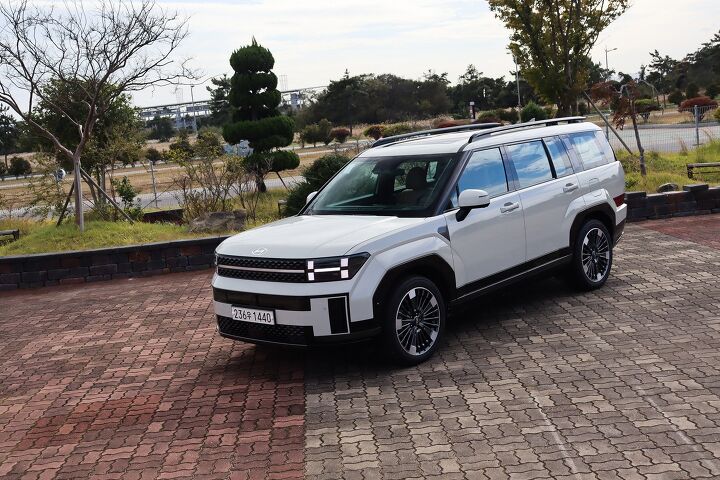
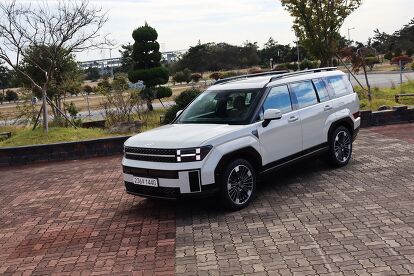






































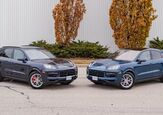
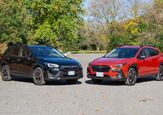
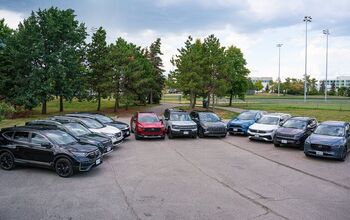
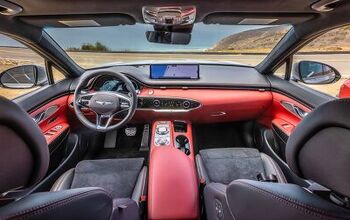
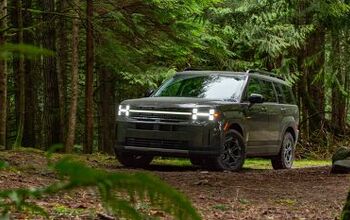
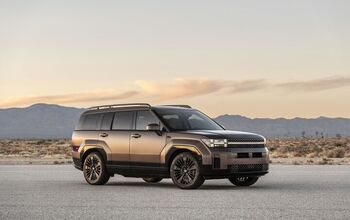
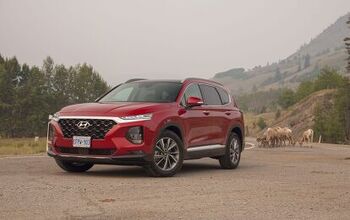

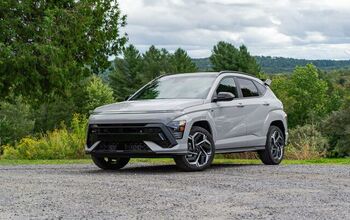











Comments
Join the conversation
Like it a lot, it does remind me of the Land Rover Defender which is not a bad thing. Exterior with its H- themed design is very cool. Only thing I’m not crazy about are the rear LED Taillights mounted low on the bumper, & LED turn-signal indicators mounted lower than that. The interior is great looking has lots of space and has a very Premium look to it. The tech’ is great as well in keeping with Hyundai’s history of offering cars, SUV’s that have the latest tech. And Hyundai finally offers wireless Apple car play & Android auto, which has been awhile in coming. I would definitely think about buying this New Santa Fe when it becomes available!
Big Boxy Lover! Could be boxier, could have higher tail lights, could have more ground clearance, could have more off road chops. Is it better that the aerodynamic crap outgoing model with the center console right up to your chest? Yes. Enough with the leather, glass roof, and aerodynamic crap already. We are in a different part of the business cycle, back to basics, clear visibility between the A, B, C and D pillar, ground clearance, and less estrogen.